Common Crypto Terms You Need to Know
| Term | Definition |
|---|---|
|
Atomic Transaction
|
A computer science term used to indicate multiple transactions that are dependent on a mathematical concept of “completeness.” If all proposed transactions can not occur at once, then all transactions will fail. In this sense an atomic transaction is also “indivisible,” either all transactions clear or none do.
|
|
Atomic Swap
|
A smart contract technology enabling the exchange of one cryptoasset for another without relying on trust by either party or that of a centralized authority. Either both assets are exchanged or no assets are exchanged.
|
|
bitcoin/BTC
|
The world’s first decentralized cryptocurrency, native to the Bitcoin blockchain. Note: Bitcoin with a lowercase “b,” abbreviated as BTC, refers to the currency.
|
|
Bitcoin
|
A publicly distributed peer-to-peer network that records the flow of bitcoin, its native currency. Created by Satoshi Nakamoto in 2008, Bitcoin is the original software and blockchain that launched the blockchain movement. Note: Bitcoin with a capital “B” refers to the underlying blockchain technology.
|
|
Blockchain
|
An append-only digital ledger that keeps track of transaction history enabling the proof of ownership of cryptoassets without reliance on traditional intermediaries such as banks. All data is encrypted, thus resistant to any sort of modification provided a sufficient network of validators (miners) is in place to maintain the ledger. Blocks of transactions are chained together to show the full history of activity since the blockchain’s inception, hence the name block - chain.
|
|
Block
|
A collection of cryptographic transactions that are recorded, verified, and proposed by participants on the network, typically called “miners”. Once verified by a consensus of nodes on the network, blocks are then appended to the previous chain of blocks on the network. This enables anyone to view and audit all transactions since the beginning of the network. New blocks are typically added at timed intervals.
|
|
Block Height
|
The number of blocks in a blockchain. The first block in a chain, also called the genesis block, is referred to as height 0.
|
|
Block Rewards
|
Miners earn block rewards for their contribution to mining a block of transactions, proposing them to the network, and having them accepted by a majority of nodes on the network. The miner will add a transaction payable to the miner’s own wallet; this is known as the “coinbase,” it is the newly minted coins that are paid to the miner as a reward for mining a block of transactions. The miners earn this as well as the sum of all of the transaction fees for every block mined.
|
|
Block Size
|
Set limit of transactions on any given block. As with other areas of computer science, there is a finite memory size a block is allowed to have.
|
|
Byzantine General's Problem
|
A difficult computer science problem originally proposed in 1982 with an allegory scenario in which information must be validated and shared within a dispersed network in order for it to act in the prescribed manner. Information found to be invalid should not affect the network.The Bitcoin Blockchain is often cited as the first wide scale solution to the Byzantine Generals problem.
|
|
Byzantine Fault Tolerance (BFT)
|
A system where all messages are broadcast correctly to the other nodes or components of the system. The BFT system ensures that a single actor or component can not send conflicting messages to the network, if conflicting messages are sent from a single actor or component they should be ignored.
|
|
Centralized Exchange
|
Online platforms used to buy and sell cryptoassets. Centralized exchanges play the “middle man” between suppliers and buyers while providing an atmosphere of equity, safety, and trust.
|
|
Chain Linking
|
The process of transferring one cryptocurrency to another, requiring the linkage of two entirely separate blockchains.
|
|
Coin
|
Any cryptoasset that has a standalone and independent blockchain. Common examples include bitcoin (the coin native to the Bitcoin blockchain) and ether (the coin native to the Ethereum blockchain). This is important to take note of in comparison to “tokens,” which are cryptoassets built on top of other blockchains.
|
|
Coinbase
|
The newly minted coins that are paid to a miner as a reward for mining a block of transactions.
|
|
Cold Wallet
|
Also referred to as hardware wallets, cold wallets provide investors with a physical medium for offline storage. Cold wallets are the most secure way to store cryptoassets, as the assets are only brought back online to make transactions. These wallets usually take the form of a USB drive with additional security measures.
|
|
Consensus
|
Agreement amongst multiple parties about the status of the network. Participants in the network must come to consensus on the current state of the blockchain in order to validate proposed changes or updates.
|
|
Crypto Asset
|
A broad term used to encompass the entire category of digital assets stored on a blockchain or other peer to peer network. The use of cryptography and distributed computing enables individuals and institutions to store value in digital form by proving the uniqueness and the ownership of a digital good.
|
|
Crypto-currency
|
A subset of cryptoassets that acts as a digital or virtual currency, these cryptocurrencies are meant to behave primarily as medium of exchange between one or more parties. While some cryptocurrencies may be programmable, their primary use case is to represent a scarce digital good, and to be transferable without the help of an intermediary.
|
|
Cryptodollars
|
Also known as stablecoins, cryptodollars are intended to provide a stable price typically “pegged” to a particular fiat currency such as USD or EU but can potentially be backed by asset portfolios. Some cryptodollars are backed by the faith of an organization based on trust, eg. Tether or USDC, and others are algorithmically operated as smart contracts ( DAI, for example).
|
|
Custody
|
The process by which assets are stored or controlled.
|
|
Decentralized Applications (dApps)
|
Applications, or protocols, using smart contracts that are built on blockchains of sufficient programmatic complexity to support their functionality. This is a burgeoning field of DeFi, currently the best examples are lending pools such as AAVE or Compound that provide investors with yield in exchange for staking cryptoassets within the dApp.
|
|
Decentralized Autonomous Organization (DAO)
|
An open-source protocol used to automate contracts, rules, and other decisions within a business that are traditionally time consuming or susceptible to human error and fraud. DAOs remove much of the need for hierarchical decision making within organizations once specific protocols (rules) are decided upon.
|
|
Decentralized Exchange (DEX)
|
Peer-to-peer exchange with no middle man, centralized custodian, or clearing house, facilitated by smart contracts aka atomic swaps (either on-chain or off-chain, depending on the technology).
|
|
Decentralized Finance (DeFi)
|
DeFi is a movement based on the idea that the financial system should not be controlled by intermediaries and third parties, but should rather be governed by permissionless peer-to-peer networks and infrastructure. DeFi providers are building alternatives to traditional financial services, as well as entirely new products. Existing DeFi applications include stable coins, decentralized exchanges, peer-to-peer lending services, financial derivatives, and non-fungible digital assets or tokens (NFTs). Most major applications are built on Ethereum, which allows for the development of decentralized software known as smart contracts.
|
|
Delegated Proof of Stake (DPOS)
|
An extension of PoS in which stakeholders outsource their work to a third party. Third parties are chosen to vote as a proxy for token holders. The more tokens held, the more voting power the stakeholder has. If elected as a delegate, they are responsible for ensuring the integrity of the generation and validation of new blocks. If the elected delegate does not work or misbehaves, they will be expelled and replaced and often penalized financially by losing whatever assets they were forced to “stake” in order to become a delegate.
|
|
Digital Wallet
|
An electronic device, software program, or service that securely stores your cryptocurrency information (such as private and/or public keys), allowing for ease of transactions and viewing assets held on the blockchain.
|
|
Double Speed Problem
|
A potential flaw in a computer network in which the same single monetary asset can be spent more than once. This is one of the core problems that established blockchains have solved. A blockchain which is not Byzantine Fault Tolerant might be subject to such problems. “Overdraft” is not possible with sufficient fault tolerance.
|
|
Double Spend Attack
|
A double spend attack is an exploit where an actor sends a coin or token to someone on the network, waits for it to be recorded, then quickly proposes a separate transaction where they send that same coin or token to a different address. This results in a disruption in the blockchain and subsequent theft of a cryptoasset. This can be accomplished by sending multiple packets to the network and reversing, cancelling transactions altogether or creating a legitimate looking copy of the code.If the network is not sufficiently decentralized, then they are more susceptible to double spend attacks.
|
|
Emissions
|
The frequency and quantity at which new cryptoassets are released. Some (like BTC) have a set amount and a predefined schedule for reducing emissions over time (see “Bitcoin Halving”), while others do not. This is sometimes referred to as “inflation,” a pre-set schedule or set of rules that allows for the creation of new coins or tokens.
|
|
Ether / ETH
|
The cryptocurrency native to the Ethereum blockchain.
|
|
Ethereum
|
An open-source blockchain with smart contract capabilities. While similar to Bitcoin, Ethereum was developed with more programmatic flexibility. Not only did this enable smart contracts, it also allowed for tokens and dApps to be created on top of the Ethereum blockchain, which is not possible on the Bitcoin blockchain.
|
|
Game Theory
|
The mathematical study of interactions amongst rational parties making strategic, interdependent decisions within a competitive environment. The Prisoner’s Dilemma is a common example.
|
|
Gamification
|
Process by which gaming tactics like points, rewards, badges, and tournaments are added to a platform to reinforce user knowledge as well as entice engagement and adoption.
|
|
Gas
|
The fee paid on the Ethereum network in return for using the platform’s computational power; the fee is paid using Ether (ETH), the platform’s native currency. The amount of ETH paid in a single transaction depends on the amount of resources required to carry a transaction to completion on the EVM (Ethereum Virtual Machine) and the demand for computation on the network at the time of the transaction. Activities that require gas include launching decentralized applications (DApps) and simple transactions like swapping tokens on decentralized exchanges.
|
|
Genesis Block
|
The first block of a blockchain.
|
|
Gwei
|
Gas is consumed in small bits called gwei. One gwei is equal to 0.000000001 ETH.
|
|
Hard Fork
|
A permanent split in a blockchain as a result of changes to the code that are not backwards compatible. If the same network nodes choose to continue to run the older software and others choose to run the new software, this will create two different chains or a “fork” in the blockchain. Example: The DAO hack led to a decision by the Ethereum community to rollback the blocks and invalidate the hack. However, several nodes on the network disagreed with the decision and chose to continue running the existing software. This caused a hard fork in the Ethereum blockchain in 2016, creating Ethereum and Ethereum Classic.
|
|
Hash
|
A random algorithmically generated code used to represent a word, message, or data. The hash is generated from a one way algorithm. No matter how much data or information is hashed, it will always produce a fixed string of characters and numbers. The SHA-256 hashing algorithm creates a 64 character string regardless of the amount of data hashed. If a single byte of data is changed, the hash will be uniquely different. Often referred to as a “fingerprint for data” it is an easily identifiable way to prove whether two sets of raw data are the same or different.
|
|
Hash Rate
|
The rate at which new nonces can be tested. Hash rate is measured by the number of times per second a computer can run the necessary variables through a hash function.
|
|
Hot Wallet
|
Web or internet connected method of holding cryptoassets that allows for easy access but is also more susceptible to hackers.
|
|
Metaverse
|
Shared digital space made up of individual nodes where users own their data and interact how and with whom they choose without corporate governance or intervention. Cryptoassets have an obvious role to play within the Metaverse, which includes bringing economic characteristics to it.
|
|
Miners/Mining
|
Miners provide hash power to the blockchain by hooking up their computers to the network. They validate transactions that contribute to the building of the blockchain as well as the overall security of the network. More compute power = more security = more valuable = more rewards to the miner. Miners collect transactions that are transmitted by nodes on the network, they validate the transactions, place them into a block, then propose that block to the network. In a proof of work blockchain they must first compute an intensive (expensive) problem that the rest of the network can verify was completed. This disincentivizes them from proposing invalid blocks to the network.
|
|
Network
|
Name given to the collection nodes and participants that facilitate the production, storage, and validation of a blockchain.
|
|
Non-Fungible Token (NFT)
|
NFTs are used to represent ownership of assets, both digital and physical, recorded on the blockchain.The word fungible means, “freely exchangeable or replaceable”. Therefore, a non-fungible token is a title to something that is not easily replaceable or exchangeable for other items. Unlike cryptocurrencies, which can be exchanged for physical money or other cryptocurrencies, NFTs can not be exchanged for one another. Like pieces of art in a gallery, each NFT is unique.
|
|
Nodes
|
Participants on a network who run special software in order to maintain an up to date and exact copy of a ledger that any individual can download and subsequently use to keep track of transaction history on a blockchain (the transaction history goes all the way back to the inception of that blockchain). The more unaffiliated nodes on the network, the more challenging it would be for a malicious actor to create fake transactions. Each node in the network must come to consensus on the blocks proposed by the miners. This is done via the blockchain software.
|
|
Multi-Signature
|
A security protocol in which multiple signatures (or keys) are needed to perform any transaction in a wallet.
|
|
Nonce
|
“Number only used once” in a cryptographic sequence.In cryptocurrency mining, the Nonce is added to a hashed block that when rehashed creates an entirely new hash that meets a specific criteria, in the case of Bitcoin, the hash must have a certain number of leading zeros this is adjusted over time as more and more miners come onto the network thus increasing the difficulty to mine a new block.
|
|
Off-Chain
|
Describes an event or process that occurs outside of the blockchain structure
|
|
On - Chain
|
Describes an event or process that occurs within the blockchain
|
|
Open source Software
|
Software development that encourages collaboration and transparency by allowing all code to be freely available to the public. Bitcoin, for example, is an open source protocol.
|
|
Peer - to - Peer
|
Name given to transactions/networks that allow individuals to interact without the presence of an intermediary.
|
|
Peer - to - pool
|
Individuals interact with a decentralized pool of liquid assets. To buy or borrow, there does not need to be a seller, only sufficient levels of liquidity of the desired asset.
|
|
Protocol
|
The Proof of Work (PoW) system is an algorithmic protocol used to reach consensus on a blockchain by auditing proposed transactions; it's necessary since crypto assets are decentralized or, without a central authority to confirm participants and verify the assets each has. Miners confirm transactions and subsequently create new blocks. The accuracy of a blockchain is dependent on PoW. It lowers the chance of double spending and susceptibility to fraud or cyber attack.
|
|
Proof of Work (PoW)
|
An alternative to PoW. In this case, a smaller and less resource-intensive pool of miners, called “validators,” provide the security and maintenance of the blockchain. Because validators have “staked” significant cryptoassets in order to qualify, those assets are subject to seizure in the event of fraud, attack, or malfeasance. Ethereum has tested this methodology, and is formally switching to PoS as of 8/5/2021.
|
|
Private Key
|
Cryptographic key used to digitally sign transactions and move assets, similar to an online bank account username and password. If a user loses their private key, then the assets are not recoverable unless precautions have been taken, such as recording a seed phrase for emergency recovery
|
|
Public Key
|
Digital addresses that, similar to a traditional bank account number, can be shared publicly without the fear of cryptoassets being stolen.
|
|
Pump and Dump
|
Buying a large amount of a single cryptocurrency, causing a sharp rise in price (likely encouraging others to buy as well), only to sell shortly afterward (causing a steep decline in price). This practice is very frowned upon.
|
|
Satoshi Nakamoto
|
The pseudonymous, unidentified individual or group responsible for the creation of Bitcoin and the original whitepaper that started the blockchain movement, “Bitcoin: A Peer-to-Peer Electronic Cash System.”
|
|
Satoshi
|
The smallest amount by which a bitcoin is divisible; one satoshi is equivalent to 100 millionth of a bitcoin. A satoshi is to BTC as a gwei is to ETH.
|
|
Self Custody
|
Method of securing a cryptoasset in which the assets and control of those assets are entirely managed by the owner.
|
|
Smart Contract
|
A computerized, algorithmic program that automatically executes terms of a contract in a fully transparent and conflict-free way (without use of a middleman) smart contracts are enabled by smart contract blockchain protocols, the most notable is Ethereum.
|
|
Social Tokens
|
Cryptoassets created around a particular person or brand for monetary purposes.
|
|
Soft Fork
|
Backward compatible update to a blockchain network. It encourages older nodes to update and maintain efficiencies software upgrades that are not mandatory for the all nodes on the network to operate are considered “soft forks.”
|
|
Staking
|
In a PoS protocol, staking is the process of holding enough of a particular cryptoasset that affords the right to validate transactions, resulting in staking rewards.Validators risk everything they stake, so they are heavily incentivized to work for the network and validate transactions properly as well as maintain a certain amount of “up-time” where they are validating transactions or they risk losing some or all of their stake. More colloquially, “staking” also refers to committing cryptoassets to lending protocols in order to earn rewards or interest.
|
|
Token
|
A cryptoasset built on top of previously existing blockchain infrastructure, as opposed to having its own blockchain. Most traded cryptoassets currently in circulation are tokens, as they are much simpler to construct and can rely on the underlying network they are built on for transaction validation and ledger security.
|
|
Tokenization
|
A digital representation of tradable assets.
|
|
Tokenomics
|
The study of all things that impact the quality and value of a token. This includes, Game Theory, Computer Science, Economics, Behavioral Finance, Network Effects, Security, and several other incentive / disincentive systems.
|
|
Transaction Fee
|
Fees offered by participants wishing to have their transactions recorded in a block. If more participants wish to transact than there is room in a particular block, miners will typically prioritize the transactions with the highest fee first.
|
|
TVL/TLV
|
“Total Value Locked/Total Locked Value'' is used to describe the total dollar amount of a cryptoasset being staked on a DApp. Commonly seen as an on-chain measurement of viability, it provides an analytical measurement of liquidity. In traditional finance, a simple analogy would be market cap- an aggregated indicator of market participants' faith in the underlying protocol’s value.
|
|
Yield Farming
|
Process by which investors have an opportunity to earn higher yields than traditional finance, by lending their cryptoassets for various uses.
|




